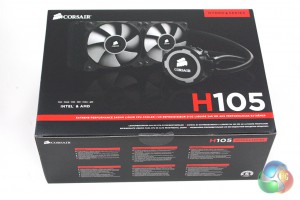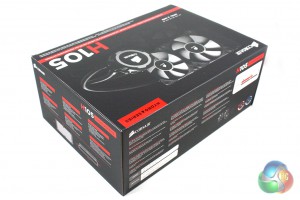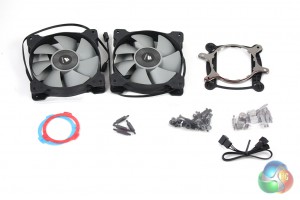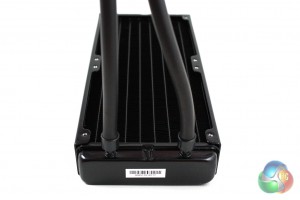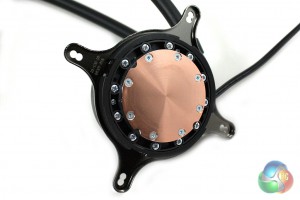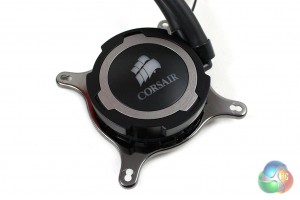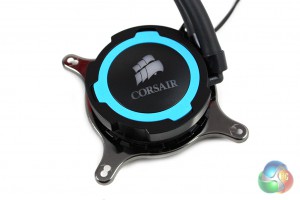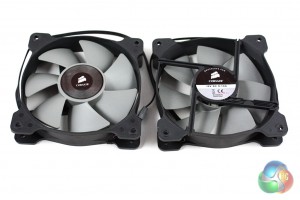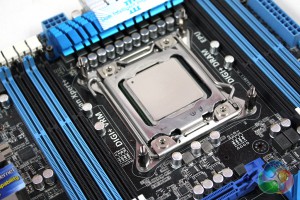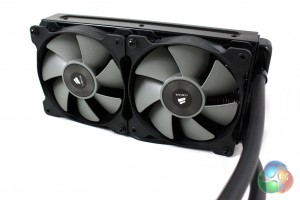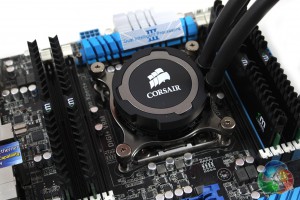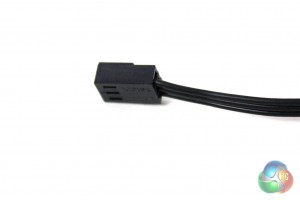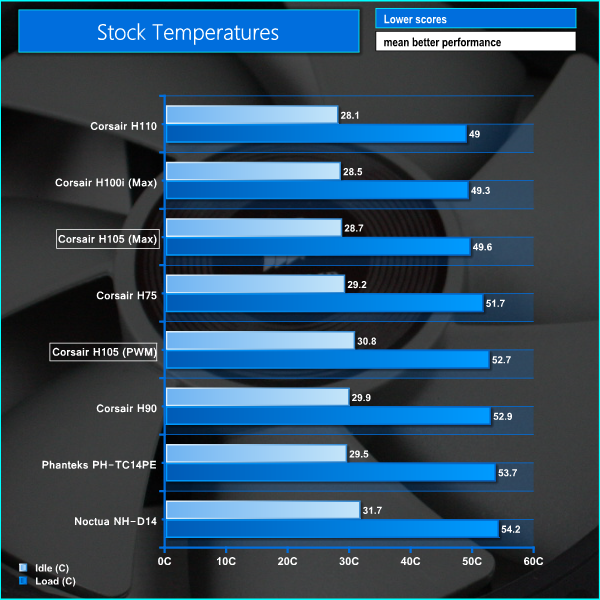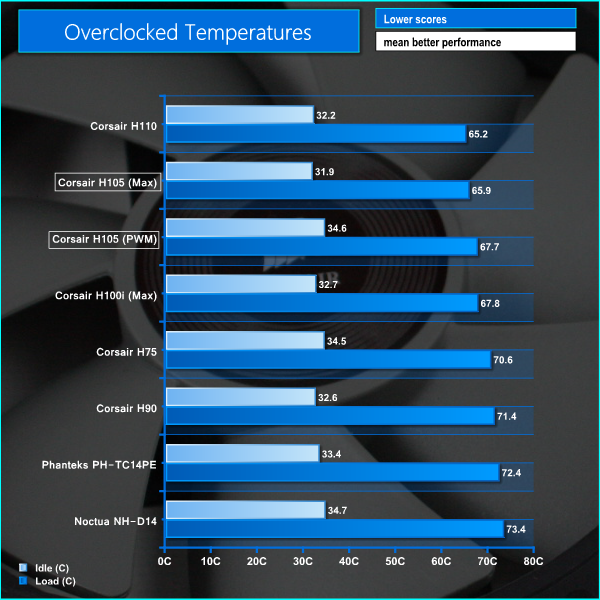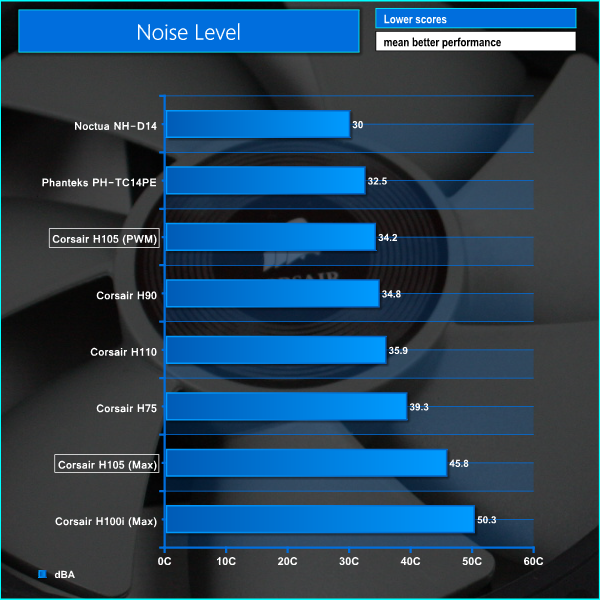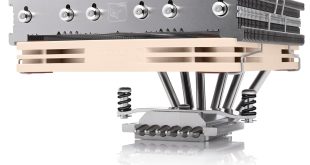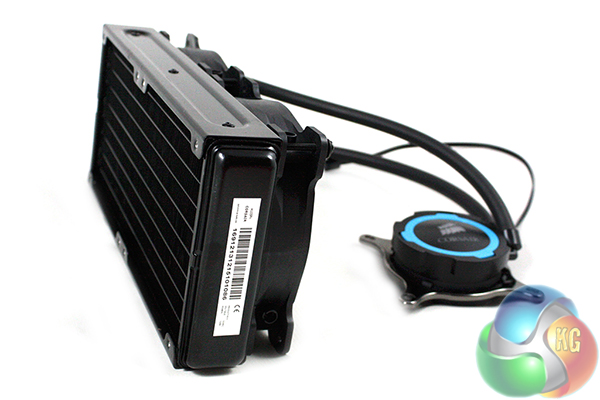
Today we are going to take a look at the latest liquid CPU cooler from Corsair, the Hydro H105. Corsair are one of the longest established players in the liquid CPU cooling market and are presently the most popular brand. This can be attributed to their wide range of products and impressive track record.
Corsair have been steadily expanding their range of liquid CPU coolers over the last few years, and have a significantly larger portfolio than any other manufacturer. With so much competition in the ‘all in one' liquid cooling market they do need to actively refresh their range to stay ahead.

The Hydro H105 differentiates itself from the competition as it has a thicker radiator, which should theoretically improve performance over a standard thickness model. The radiator on the Hydro H100i model for instance is 27mm thick, versus 38mm on the new Hydro H105.
Specifications
Radiator dimensions: 272.5mm x 120mm x 38mm.
Fan dimensions: 120mm x 120mm x 25mm.
Fan speed: 800 RPM – 2700 RPM (+/- 10%).
Airflow: 73 CFM.
Noise Level: 37.7 dBA.
Static pressure: 3.9 mm/H20.
Power Draw: 0.34A.
Intel Compatibility: LGA 1150, 1155, 1156, 1366, and 2011.
AMD Compatibility: FM1, FM2, AM2, and AM3.
Corsair box artwork is very distinctive, and the Hydro H105 package is immediately recognisable. The top of the box features a large image of the cooler within, alongside some basic information. The box features a red and black livery which fits in with the rest of the Corsair Hydro Series.
The flip side reveals further details about the features and specifications of the cooler. We are very impressed with the quality of the packaging. It feels very durable and the extensive inner packaging should protect the cooler from any damage during transit.
Inside the box, the bundle consists almost entirely of the mounting components which give the cooler excellent compatibility with different platforms. Corsair thoughtfully pre-attach the Intel configuration, though, to save time during installation. AMD users will have to remove the preattached Intel bracket before starting their build.
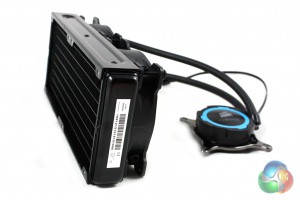
Corsair haven't strayed from their standard design, consisting of a 240 mm radiator which is connected to a CPU block with an integrated pump.
This particular model is based on an Asetek OEM design, which is slightly different to the CoolIT Systems models such as the H80i and H100i. This means that this particular model doesn't include Corsair Link, making it perfect for those users who want to use fixed speed fans or their own external fan controller.
As we mentioned earlier on in the review, the factor which differentiates the H105 from the competition is the increased thickness of its radiator. It measures 38 mm thick, meaning it is around 50% thicker than most competing models. This should theoretically let it transfer heat more efficiently, leading to cooler temperatures.
This may compromise the compatibility with some chassis, though, and we would certainly recommend ensuring that your case has enough headroom above the motherboard before a purchase.
With the fans attached, it will need around 65 mm of clearance between the top of the motherboard and case. This would increase to around 90 mm if you intend to use a push-pull fan configuration.
Like the Corsair Hydro H75 that we reviewed a while ago, the H105 features a circular copper CPU block which is pre-applied with thermal paste to facilitate installation.
We replaced this with our own for testing. This will ensure that our thermal results are consistent with other coolers we have tested previously.
As with most all-in-one liquid CPU coolers these days, the pump is integrated in the CPU block. This isn't immediately obvious, though, as it is remarkably low profile considering.
In fact, it would barely overshadow low-profile memory, although the coolant tubes do require a little more space.
The integrated pump is powered via a 3-pin fan header, although we would recommend attaching this straight to your power supply rather than your motherboard to ensure a consistent voltage.
Corsair have clearly thought about the audience who like to colour co-ordinate their system. Even though the black design will fit in with most colours, they have included a set of replacement rings for the CPU block which can easily be interchanged to change the appearance.
The replacement rings are red and blue, or you can simply leave the more subtle grey one which is preinstalled. The Corsair logo in the top of the CPU block is illuminated in white, which shouldn't be offensive to any colour scheme.
The H105 is supplied with two Corsair SP120L PWM fans, which we believe are some of the best stock fans that you're likely to get with a cooler.
They share the same basic design with Corsair SP120 Quiet and Performance edition fans although they don't offer the same interchangeable rings. The SP120L fans are capable of spinning between 800 and 2700 RPM, generating airflow of 73 CFM, while emitting noise @ 37.7 dBa.
Corsair supply the H105 with an installation manual which guides us through the process. It's fairly simple, though, and we managed to install it in about two minutes, without even looking at the manual. We will be documenting the installation procedure on a Socket 2011 system.
First of all we are instructed to install the stand-off screws into the CPU socket. If you have a socket 1150 or 1155 motherboard, you will need to install the back-plate at this point as well.
Next, we can attach the two fans to the inside of the radiator, and then screw the radiator to the case. The cooler could also be installed with the fans in a pull-configuration, so they are located between the radiator and the case.
The CPU block can be easily secured down onto the motherboard, using the four thumbscrews provided. It is easy to get these tight enough without resorting to a screwdriver, which helps prevent you from over-tightening them too.
Finally, the pump and fans can be connected to your system using the 3-pin and dual 4-pin headers respectively.
To test the performance of the Corsair Hydro H105, we built a powerful X79 based system on an open test bench to push the cooler to the limits. As we were testing on an open test bench, we directed a Be Quiet! Shadow Wings 120 mm fan at the VRM circuitry to better simulate the airflow generated in a case.
For our extreme tests, we manually overclocked the i7-3930K to 4.7 GHz by increasing the multiplier to 47x, leaving the baseclock set at 100 MHz.
We set Load Line Calibration to ‘High', and increased the CPU Current Capability to 120% with a minor voltage increase. Speed stepping was disabled for both stock and overclocked tests.
We tested the H105 both with the fans at full speed (12V) and in PWM mode using the predefined “Normal” profile on our Asus P9X79 motherboard.
Coolers Tested
- Corsair H105
- Corsair H75
- Corsair H110 (fans at 12V)
- Corsair H90 (fan at 12V)
- Phanteks PH-TC14PE (fans at 12V)
- Noctua NH-D14 (fans at 12V)
- Processor: Intel Core i7-3930K
- Motherboard: Asus P9X79
- Memory: 16 GB (4 x 4 GB) Mushkin Blackline 1600 MHz
- Thermal Paste: Arctic Cooling MX-2
- Graphics Card: AMD Radeon HD 7950
- Graphics Card (noise tests): HIS Radeon HD 5550 Silence
- Power Supply: Seasonic Platinum P1000W
- Prime 95 (64-bit)
- CPUID Hardware Monitor
For temperature tests we loaded the system for 10 minutes using Prime 95 and recorded the CPU temperature using CPUID HWMonitor. We then restarted the system and left it idling at the desktop for 10 minutes before recording temperatures. The temperatures recorded are based on an ambient temperature of 20 degrees C.
We can see that the H105 performs well, especially in the overclocked tests. When the processor is overclocked, the H105 even offered slightly better performance than the H100i at maximum fan speed.
In our noise level tests we switched off all the case fans and replaced the AMD Radeon HD 7950 graphics card with a HD 5550 passive model so were just taking into account the noise generated by the cooler fans themselves.
We measured the noise level with a Digital Noise Level meter at a distance of 1 m from the front of the system.
With the fans spinning at maximum speed, the noise level was unbearable, however in PWM mode, the noise was reduced significantly.
Unless you're looking to achieve overclocking records the small sacrifice in terms of cooling ability is definitely worth the significantly lower noise level.
There is no doubt that the Corsair Hydro H105 is an impressive cooler. It is ideal for the enthusiast audience who demand excellent cooling performance but who don't need Corsair Link and the related software fan profiles.
The build quality of the H105 is just as good as Corsair coolers we have reviewed in the past. It is particularly similar to the H75 which features an Asetek design.
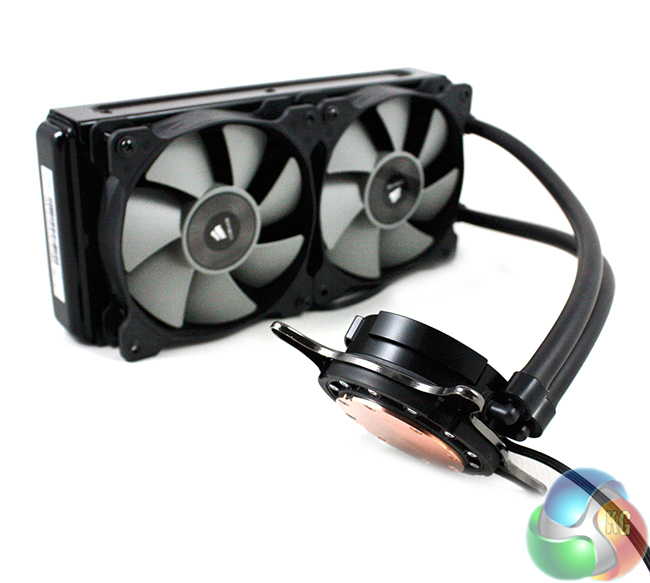
Corsair supply two high quality SP120L fans with the cooler which are PWM controlled, meaning you can strike a great balance between airflow and noise. Unfortunately these particular models are very difficult to find in the United Kingdom. Those users who are looking for a quad-fan configuration will likely have to buy four additional, matching fans, unless you don't mind importing them, or risking an Ebay transaction. Amazon USA have them in stock, and you can buy them direct from Corsair in America for $14.99 each. Be aware, the SP120 variants are very different from the SP120L model.
The Corsair mounting mechanism has evolved with almost every new generation of cooler they release. The latest iteration makes it easier than ever to install, taking around two minutes from start to finish. It offers great compatibility too, although AMD users will have to remove the preattached Intel bracket first, adding a little hassle to the process.
The performance of the H105 is exactly what we would have expected. It slots in between the H110 and H100i, making it ideal for those who want better performance than the H100i but don't have room in their case for the H110.
We would recommend using the SP120L fans in PWM mode, as you only have to sacrifice a few degrees under load for significantly quieter acoustics. It is painfully loud at full speed, to the point where it becomes extremely annoying after a few minutes use.
At £94 from Overclockers UK, the H105 is very expensive and will only be justifiable for those who are looking for the best possible performance. It is similarly priced to other competing models, though, and actually comes in slightly cheaper than both the Corsair H100i and H110.
The Corsair Hydro H105 is worthy of our ‘MUST HAVE' award.
Discuss on our FACEBOOK page, over HERE.
Pros:
- Excellent performance.
- Easy installation process.
- Compatible with all major platforms.
- High quality fans included.
- 5-year Warranty.
Cons:
- Very noisy at full speed.
KitGuru says: Another welcome addition to Corsair's range, which offers slightly better performance than their current 240 mm offerings.
 KitGuru KitGuru.net – Tech News | Hardware News | Hardware Reviews | IOS | Mobile | Gaming | Graphics Cards
KitGuru KitGuru.net – Tech News | Hardware News | Hardware Reviews | IOS | Mobile | Gaming | Graphics Cards


